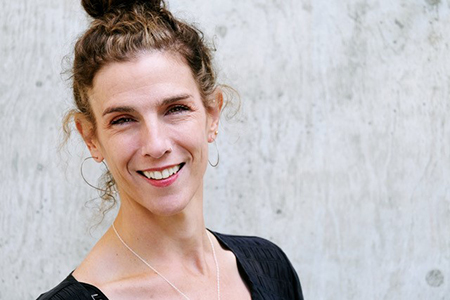
Anyone who’s used a fitness tracker knows the drill. Watch the trend line go in one direction and you feel better about yourself; watch it go the other way and you eventually just stop checking your app.
For many people, it’s unfortunate if an app doesn’t help, but it’s not necessarily a dangerous failure of technology. For some users, however, this one-size-fits-all approach to showing progress toward a health goal may actually be harmful, according to Information School Assistant Professor Jaime Snyder, an expert in data visualization. Her work has shown that vulnerable populations, including those with serious mental illness, may not be well-served by the standardized visualizations in apps that people use every day to monitor their health and well-being.
“How can we build visualizations of personal health data that better reflect who we are in more nuanced ways? Because these visual representations are increasingly impacting how we understand ourselves,” Snyder said.
Snyder recently was awarded a National Science Foundation Faculty Early Career Development Program (CAREER) award worth nearly $550,000 over five years to explore such questions. She will study alternative ways to present personal data visualizations to vulnerable populations, shifting her focus to people with autism and transgender and gender-nonconforming young adults. Each of these groups relates to data about themselves in different ways, influenced by complex social identities, Snyder said. This study is designed to explore how conventional approaches to data visualization can introduce problematic obstacles for individuals in these communities, with the goal of offering alternatives that better reflect each individual.
NSF CAREER awards are typically given to early-career faculty who have the potential to serve as academic role models in research and education, and to lead advances in the mission of their department or organization. Snyder said the study, titled “Visually Encoding Personal Data for Vulnerable Populations,” stems from earlier research on smartphone use among people with bipolar disorder, a serious mental illness characterized by significant swings in mood. This chronic health condition is often treated through a combination of medication and therapeutic self-tracking.
One of Snyder’s recent studies explored technology use by people with bipolar disorder. To better understand challenges of displaying tracking data for this group, researchers asked participants what visual metaphors best describe their experiences. Responses reflected something much different from the tidy linear data visualizations common to activity trackers.
“I want to train the next generation of data scientists to ask, ‘What are the lived experiences reflected in these data?’”
“Those survey responses really highlighted that for people with bipolar disorder, some of the conventions – especially related to showing change over time – just don't match their lived experience, potentially introducing really damaging expectations and feelings of being judged,” she said.
In a later study, Snyder worked with another group of individuals diagnosed with bipolar disorder to reimagine visualizations more in line with their experiences. She enlisted a graphic designer to transform the ideas suggested by participants into visual designs that more accurately reflect the experiences of these users. The research piqued her curiosity about whether other groups with complex identities may also be underserved by techniques commonly used to visualize personal data, leading to the body of research funded by the NSF CAREER award.
While the CAREER study will look at alternative visualizations specifically for people with autism and transgender young adults, the research could have broader implications for how personal data devices and apps show us who we are. If designers of such devices take a more holistic approach to visually displaying data, the devices could improve for everyone.
That leads to the other key part of Snyder’s project: introducing data science students to qualitative design methods to help raise their awareness that there are real people behind the numbers.
“The goal is to have data scientists aware and asking important human-centered questions about the data they are working with when they're developing algorithms, when they're assembling datasets, and when they're making choices about what stays and what goes as they prepare data for processing,” Snyder said. “I want to train the next generation of data scientists to ask, ‘What are the lived experiences reflected in these data?’”
Snyder was thrilled by the announcement of the CAREER award because it will allow her to pursue a “dream project” – one that distills several themes of her research, including working with community members to think deeply about relationships between data and identity.
“It's really exciting to have the NSF recognize the importance of critical design work like this project,” she said. “With this support, my students and I will really be able to push the boundaries on how we visually represent data about ourselves.”